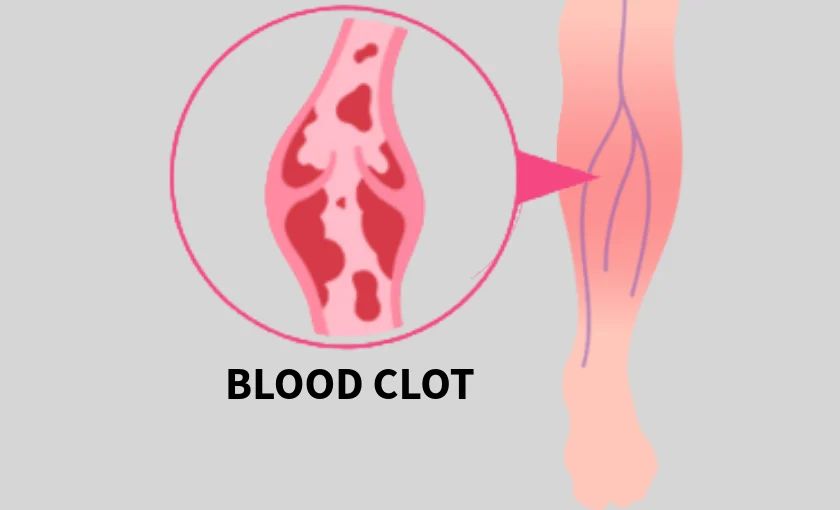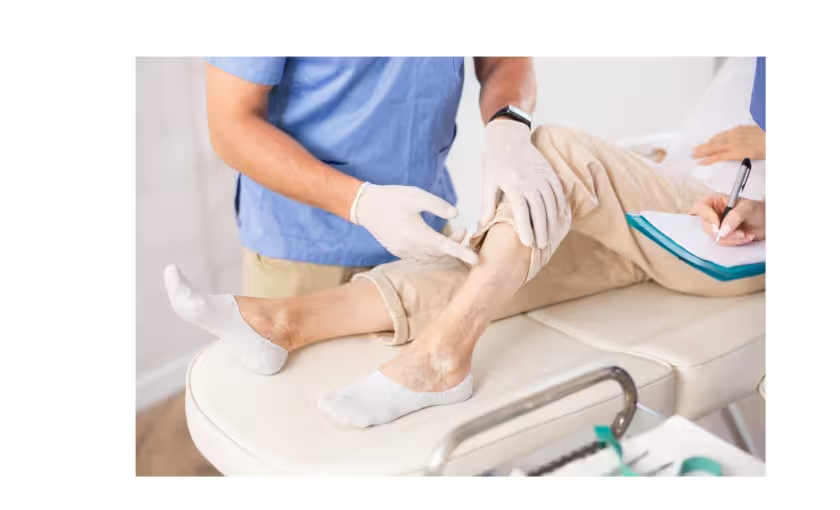Blood Clots in the Legs: Causes, Symptoms & Dangers

Understanding Chronic Venous Insufficiency (CVI)
Your veins carry blood back to the heart, relying on one-way valves to keep it moving in the right direction. When these valves weaken or become damaged, blood can flow backward and pool in the legs — a condition known as chronic venous insufficiency (CVI).
CVI is very common, affecting up to 40% of adults in the U.S. It often develops gradually due to factors such as:
- Aging (especially over 50)
- Female hormones or pregnancy
- Excess weight or obesity
- Sitting or standing for long periods
- Family history of vein disease
When circulation slows down, pressure builds in the veins, leading to swelling, varicose veins, and sometimes dangerous blood clots.
Common Symptoms of CVI
If you notice any of the following symptoms, schedule an evaluation with a vein specialist:
- Swelling in the lower legs or ankles
- New or worsening varicose veins
- Itchy, flaky, or discolored skin on the legs
- Cramping, heaviness, or restlessness in the legs
- Open sores (ulcers) on the ankles or calves
Early diagnosis is key — untreated CVI increases the risk of developing deep vein thrombosis (DVT), a serious type of blood clot.
Why Blood Clots in the Legs Are Dangerous
When blood pools and thickens in the veins, it can form a blood clot, or deep vein thrombosis (DVT).
A DVT can cause:
- Sudden swelling in one leg
- Warm, red, or discolored skin
- Pain or tenderness (often in the calf)
- A heavy or tight feeling in the leg
If you notice these symptoms, seek medical attention immediately.
When a Clot Becomes Life-Threatening
A blood clot can sometimes break free and travel to the lungs, causing a pulmonary embolism (PE) — a medical emergency.
Call 911 if you experience:
- Sudden shortness of breath
- Sharp chest pain or coughing up blood
- Rapid heartbeat or fainting
Prompt diagnosis and treatment of DVT can save your life and prevent long-term complications like post-thrombotic syndrome.
Treatment Options for CVI and DVT
Fortunately, both CVI and early-stage DVT respond well to treatment when detected promptly. Depending on the severity, your provider may recommend:
Minimally Invasive Treatments
- Sclerotherapy: A solution is injected into affected veins, causing them to close and reroute blood through healthier veins.
- Endovenous Ablation (Radiofrequency or Laser): Uses heat energy to seal damaged veins from the inside.
Surgical Options
For larger or more advanced vein disease:
- Vein Ligation: The vein is tied off to stop blood flow through the damaged area.
- Vein Stripping: The diseased vein segment is removed entirely to improve circulation.
These treatments are outpatient, low-risk, and highly effective at restoring healthy blood flow.
CVI and DVT Care in the East Bay
If you live in the East Bay Area and experience symptoms such as swelling, leg pain, or visible vein changes, contact the BASS Vein Center for a thorough evaluation.
Our experienced vein specialists use state-of-the-art ultrasound technology to diagnose vein disorders and offer customized treatments to prevent serious complications.
Don’t wait until symptoms worsen. Early intervention can prevent dangerous clots and help you regain comfort and mobility.
Related Conditions
Frequently Asked Questions
1. Are all leg blood clots dangerous?
No, but clots in deep veins (DVTs) can become life-threatening if they travel to the lungs. Always get checked if you have sudden swelling or pain in one leg.
2. Can blood clots be prevented?
Yes. Staying active, maintaining a healthy weight, avoiding long periods of sitting, and wearing compression stockings can all reduce your risk.




